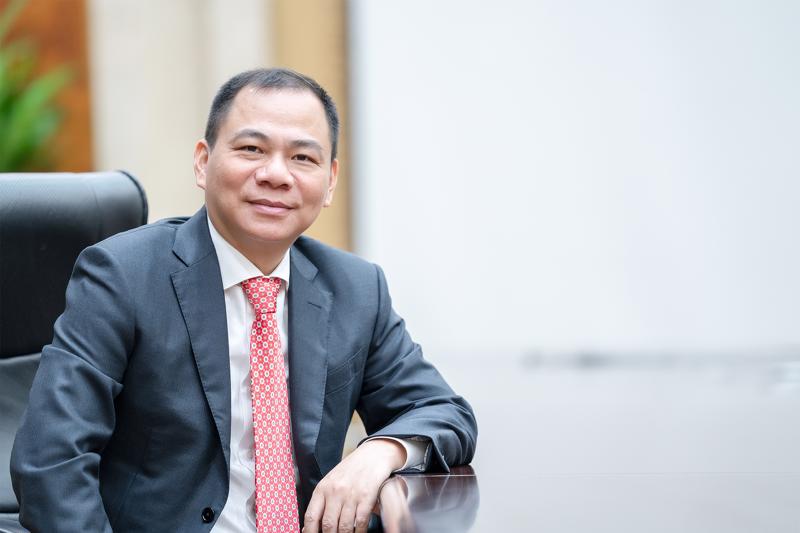Pham Nhat Vuong, Vietnam's richest man, insists he will never abandon Vinfast, the vehicle manufacturing company he founded five years ago.
Speaking at Vingroup's annual shareholder meeting on April 25, Mr. Vuong, Vingroup's chairman, declared that the automaker was not just another business, but a matter of national responsibility.
"Like 70 years ago when carrying out the historic Dien Bien Phu campaign, we had the slogan 'all for the front line, all for victory'. VinFast is the same. We never let go of VinFast."
The Dien Bien Phu campaign Mr. Vuong was referring to was a pivotal moment in Vietnamese history, marking the decisive defeat of French colonial forces by the communist army. The South East Asian nation is celebrating the 70th anniversary of the victory on 7 May.
Betting the House
It was a defiant stand by the 56-year-old billionaire, who has staked much of his $7.1bn business empire on the success of Vinfast amid mounting losses.
In 2023 the electric carmaker racked up a net loss of VND 18.3 trillion ($718m). Its parent, Vingroup, injected VND 12.7 trillion ($498m) last year to keep it afloat, following previous donations of assets worth around $1.5bn.
Mr Vuong has now gone a step further by taking hands-on control of Vinfast's operations. Earlier this year, he was appointed its chief executive, replacing Le Thi Thu Thuy who became chairwoman. The boardroom revamp, the company said, would help accelerate global expansion plans.
Ambitious Overseas Push
VinFast's investment expansion is remarkable, especially considering that the Vietnamese firm only began building cars in 2019.
Operating from its modern factory in Haiphong, the company currently has the capacity to manufacture around 950,000 vehicles annually, spanning both electric and internal combustion ranges. The latter are gradually being phased out as VinFast transitions towards exclusively producing electric vehicles.

But cracking overseas markets has proven difficult for Vinfast so far, with just 6,000 of its 35,000 electric deliveries last year made abroad, mostly in the US.
Undeterred, the company is forging ahead with plans to establish three new factories in America, India, and Indonesia, totalling billions of dollars complementing its existing facilities.
The construction of the US plant alone is projected to require approximately $2 billion in investment. Yet, Mr. Vuong highlights the allure of substantial incentives of over $2 billion without elaborating further.
Meeting its own expectations for global sales of hundreds of thousands of electric vehicles in the coming years will be challenging. But the company's aims are lofty – to establish Vietnam's first-ever "national champion" able to take on foreign automakers at home and in international markets.
Gaining Local Edge
Part of the gambit is to gain an edge over rivals in Vietnam's fast-growing market. Mr Vuong boasted that Vinfast's localization rate for domestic production had already reached 60% under state rules, with over half its components now locally sourced.
That furthers the government's goals of developing domestic industry. "If the whole society joins hands to build VinFast, members of the corporation cannot deny that responsibility," he stated.
Cash Crunch
For now, Vinfast's cash constraints remain a pressing concern. Vingroup, a real-estate-to-resorts conglomerate that is Vietnam's largest private firm, recorded soaring losses of $1.3bn in its manufacturing division last year as it pushed into carmaking.
Although Mr Vuong insists the company has never missed a debt payment, its balance-sheet is certainly stretched.
VinFast achieved a revenue of approximately $1.12 billion last year, marking a substantial 91% growth compared to 2022, driven by heightened vehicle deliveries.
While increased revenue has contributed to a reduction in losses from main business activities, dropping to approximately $1.58 billion in 2023 compared to $1.66 billion a year earlier, the company still grapples with high financial costs.
Consequently, in 2023, VinFast had an additional net loss of approximately $2.24 billion, bringing its accumulated losses to approximately $7.23 billion.
To address this, the billionaire has taken the unusual step of pledging to directly bankroll Vinfast with a further $1bn from his personal holdings, following a previous $1bn outlay.
With work already underway on Vinfast's overseas factories and its first American showrooms open in California, Mr Vuong appears determined to put Vietnam's motorists in the electric vehicle revolution - even if the road ahead appears long and winding.
Risky Road Ahead
The odds are stacked against Vinfast succeeding in its ambitions. Established automakers like Tesla, Volkswagen and BYD are years ahead and have deeper pockets. Competition from Chinese brands like GAC Aion and Chery is also intense as they expand abroad.
Battery supplies are another potential bottleneck as demand soars. Mr Vuong has invested millions of dollars in lithium battery plants in Vietnam and abroad through Vingroup subsidiary VinES. But this is unlikely to satiate needs if production scales up as rapidly as targeted.
There are also financial risks from the bets on multiple overseas factories requiring billions in upfront costs, even with subsidies and incentives on offer. Demand in recipient countries is hard to predict, especially as a potential US electric vehicle tax credit favors locally-made models over imports.
The car venture is arguably Mr Vuong's biggest industry disruption gamble yet. Whether Vinfast can successfully navigate the potholes and stiff headwinds remains to be seen. For a trailblazing first-time automaker with powerful backers but finite resources, the path ahead could include some bumps in the road.









 Google translate
Google translate